most of the following illustrations are from the marvelous “Inspiration From Creation” book by Stuart Burgess and Dominic Statham
Examples of design in nature, irreducible complexity, robotics, dragonflies, sling-jaw fish, immune system
First, extras, off topic -
1.red flag warnings from OpenTheBooks on Substack:
Since 2006, 103 rank-and-file agencies outside of the Department of Defense (DOD) spent $3.7 billion on guns, ammunition, and military-style equipment (inflation adjusted to CPI). 27 of those agencies are traditional law enforcement under the Department of Justice (DOJ) and the Department of Homeland Security (DHS).
However, 76 agencies are pencil-pushing, regulatory agencies, i.e. Environment Protection Agency (EPA), Social Security Administration (SSA), Veterans Affairs (VA), Internal Revenue Service (IRS), Health and Human Services (HHS), Department of Transportation, U.S. Department of Agriculture (USDA) and many others.
Headcounts: There are now more federal agents with arrest and firearm authority (200,000) than U.S. Marines (186,000).
~ Dwight Eisenhower, 1953: “Every gun that is made, every warship launched, every rocket fired signifies, in the final sense, a theft from those who hunger and are not fed, those who are cold and are not clothed. This world in arms is not spending money alone. It is spending the sweat of its laborers, the genius of its scientists, the hopes of its children…”
2. Something else that just came up, only slightly off topic - research on photosynthesis, without which there would be no life
An article in “Nature”, published last Tuesday 4/3/23, says researchers are getting closer to understanding the important final step in photosynthesis – the release of oxygen. They’ve been using some extremely hi tech equipment which you can see in a video made a few years ago.
2017 Video, explaining photosynthesis production of oxygen
What impressed me is how many scientists and how much very advanced equipment it takes to even come close to understanding God’s design of a most basic necessity of life. Where would we be without photosynthesis? There would no food chain or breathable oxygen, therefore there would be no life
now, finally, our topic - life designs we (and even engineers) can learn from
Darwin didn’t know…
The more they are studied, the biological, chemical, and mechanical systems in a living cell are realized to be even more complex than we could have ever imagined. We’ve come a long way from Darwin’s day, when the available microscopes could only see a cell as a blob with a dark center (the nucleus). Darwin had no idea…
Here’s a link to one of the “SciencewithSusanna” classes. She has a unique teaching method, talking while simultaneously sketching with colored pens to illustrate the lesson. (An amazing example of womens’ ability to multi-task -LOL) This one is on the structure of the cell, Part 1. https://www.sciencewithsusanna.com/cell-structure
Also watch this video of a simulated cellular engine that moves needed material around in the cell.
Dominic Statham, co-author for “Inspiration From Creation”, is an expert on assembly and automation. He points out that designing an assembly line is hard enough when there are human employees to keep things running and make repairs, corrections, replacements, and adjustments when there are breakdowns. To imagine all these functions from ordering of parts and tools and machines to manufacturing to assembly to revision, repair and correction being done automatically is mind-boggling. Yet that’s exactly what we see in a living cell. He writes: “In the cell, where everything is automated, the evolutionary process would be severely limited because a change in a feature produce at one manufacturing stage would often require simultaneous changes at other stages. Manufacturing engineers are acutely conscious of this kind of problem.”
Obviously, without living cells, there would be no living organisms. The incredible, intricate, genius (God is the genius) design of an individual living cell is only the smallest example of life in the awesome world in which we live. The way the different types of individual cells are assembled and organized in each plant or animal is even more wonderful evidence of genius in design.
cooperation
“Do nothing out of selfish ambition or empty pride, but in humility consider others more important than yourselves.” Phil.2:3
We could learn something from multi-cell organisms about cooperation and helping each other and working together. Since each cell needs to reproduce itself, you’d think that’s all they’d care about. But no, all living cells have to work together in order to have a living organism. In fact, individual cells have to somehow know when to quit their growth pattern once the ‘blueprint’ (from DNA) is achieved. Imagine what would happen if the cells that form your fingers didn’t know when to stop growing. I wouldn’t want fingers that were 3 feet long, nor a nose that wouldn’t quit growing, like Pinocchio. This is where engineering and design really become apparent. We can observe whole complex systems that are designed by our Creator God more perfectly than any human engineer could possibly do.
Skin in the game
Consider the marvels of human skin. It looks simple enough, but as Dr. Burgess, co-author of “Inspiration From Creation” says, it “has an incredibly intricate design and performs many important functions. These include insulation, cooling, heat sensing, touch sensing, vitamin D production, sealing and physical protection.” How does your skin know when and how to grow new cells to knit itself back together to heal a wound? How does it know when to trigger the sweat glands? Or to produce “goose” bumps?
Pumped up
Consider the circulatory system. How does your heart know when it needs to speed up? How do your blood vessels know when to contract or expand? You can spend a lifetime just studying the human body and barely tap the depths of wonders.
Watch another class from “SciencewithSusanna”, on heart structure. https://www.sciencewithsusanna.com/cardiovascular-system
Irreducibly complex design -recommended: “Darwin’s Black Box”
Many living systems are “irreducibly complex”. (I believe that term was first coined in “Darwin’s Black Box” by Michael Behe.) That means all the parts are needed in order to function. This presents a tremendous problem for the theory of evolution, because if a system can’t function until all the parts are present and correctly assembled, how could it possibly have evolved? It couldn’t. It had to be created complete and whole and functioning right from the start.
Blood clots
One of the examples Michael Behe uses in “Darwin’s Black Box” to illustrate irreducible complexity is the blood clotting system. We take blood clotting and scabs for granted, but if we get a cut and our blood doesn’t clot, we bleed to death. On the other hand, if clots form when or where they are not needed, they can cause strokes and death.
Immune system
Another example is the immune system.
“Your immune system is highly complex and is integrated into virtually every other organ system. It has multiple components, including the coverings of our body internally and externally, which are alive with intricate defenses. It also has a rapid response team known as the innate immune system. Finally, when these defenses are not enough, it has a highly refined and specific set of defenses known as the adaptive immune system, which can target danger signals with great precision and accuracy.” Health.clevelandclinic.org
Here’s a 5 minute video that gives you a greatly simplified overview of the immune system. Even in this watered down version, two things are obvious: the immune system is complex, and all the parts and steps are essential. It’s irreducibly complex. If something is left out, the system fails. It couldn’t have evolved gradually piece by piece, because all the parts were needed right in the beginning. It was designed by the Great Designer.
Or if you really want to learn all about it, watch another lesson for nursing students: https://www.sciencewithsusanna.com/immune-system
As I was writing this, I stumbled on to a news flash from “Wired” about monocytes in the immune system going haywire after a covid lung infection. Read more
Engineering principles and bio research
ICR’s LSM laser scanner
ICR’s (Institute for Creation Research) most recent initiative is the development of a biological model that examines the innate abilities of living creatures in light of engineering principles. One of their projects has found that non-pigmented cavefish very rapidly develop pigmentation when exposed to virtual sunlight. It doesn’t take millions of years.
ICR sees engineering principles embedded in DNA
Our internal DNA is encoded for adaptation:
“Recent discoveries indicate that something radical and impressive is happening. Adaptation is a result of brilliant biological engineering rather than trial-and-error death and survival, which flips the mechanism of adaptation completely on its head. This approach views biological adaptation as primarily occurring through internal mechanisms (the ability to actively sense the environment and adapt).” Read more
Recommended: “Inspiration From Creation”
This book explains how the Wright Brothers studied birds to see how to control the 3 dimensional movements of an airplane with moveable flaps and rudders, how we got Velcro by studying burdocks, new ‘self-healing’ materials by studying blood clotting, a new clean material valuable for medical use called ‘sharklet’ by studying shark skin, and mist sprays from studying bombardier beetles, and much more.
Dragonflies and “micro air vehicles”
We have a little pond and I’ve always been fascinated by watching dragonflies zoom around so skillfully that it would make an ace pilot wish he could do one tenth as well.
Co-author Stuart Burgess, professor of engineering design at the U of Bristol, describes in detail a 4 year project to develop an “insect-inspired micro air vehicle”. The inspiration? Dragonflies. They used a high speed camera to replay the wing motion 40 times slower, so they could see just how the wings flapped and twisted.
“We observed that, with every single stroke, there were two precise twisting actions taking place, one near the end of the upstroke and one near the end of the downstroke…we were also struck by how effortlessly and gracefully the dragonfly could manoeuvre. With perfect control, it could move forwards, backwards, hover, and even move sideways.”
He also tells about the dragonfly life cycle, which starts as an egg, then a bottom-dwelling nymph, then it climbs out of the water and morphs into a dragonfly.
“It is astounding to think that a dragonfly starts as a swimming creature, then briefly becomes a crawling creature (they climb up the stalk of a water plant to the surface) and then it becomes one with supreme flying abilities. That is like a submarine that is also an amphibious vehicle that can climb out of the water and then turn into a helicopter…the dragonfly is a creature whose design seems almost beyond human comprehension.”
Robotics
“Robotics engineers are seeking inspiration from limb joints found in nature because these are more compact and more durable” than any joint designed by humans.
Design of the knee joint
“The [human] knee joint has two mechanisms: a rolling cam and a linkage system. This is a brilliant design because the cam system (formed by the two bones) is ideal for transferring loads while the linkage mechanism [the ligaments]…is ideal for guiding the joint.”
“Producing a bioinspired joint has been a humbling experience for my team. We have not attempted to copy the most complex aspect of movement: the twisting motion just before locking….Yet we still needed to carry out millions of calculations…The idea that such a brilliant design could be the product of random genetic mistakes filtered by selection is simply untenable.”
The hand
Professor Burgess also supervised graduate students with grants for studying how to design mechanical robotic joints that are lighter, more compact and more efficient, especially for robotic exoskeletons fitted to people who may have lost the function of their hands due to a stroke or injury.
Surprisingly, they gained insight from 3 dimensional CT scans of the skeleton of a rare fish called a “slingjaw wrasse”. This fish has the unusual ability to project its whole jaw forward quickly to catch food. Here’s a slow motion action shot.
Recommended: “Evolution: A Theory in Crisis” by Michael Denton
Dr. Denton imagines a cell magnified a thousand million times so we could see what’s going on.
Here’s just one little excerpt:
“On the surface of the cell we would see millions of openings, like the [portholes of a vast spaceship, opening and closing to allow a continuous stream of materials to flow in and out. If we were to enter one of these openings we would find ourselves in a world of technology and bewildering complexity. We would see endless highly organized corridors and conduits branching every direction away from the perimeter of the cell, some leading to the central memory bank in the nucleus, and others to assembly plants and processing units…We would see all around us, in every direction, robot-like machines.”
Conclusion: God is the Great Designer
“In the beginning, God created the heavens and the earth” Gen.1:1
Amen.
My schedule is to publish once a week, every Thursday. Subscriptions are FREE; you can unsubscribe at any time.
Next week: archaeological evidence for the bible


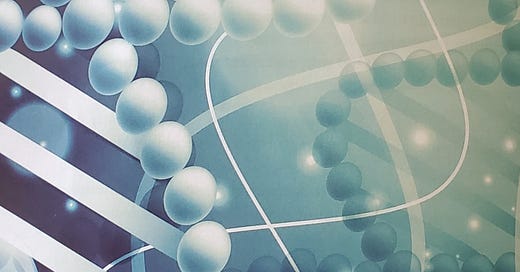



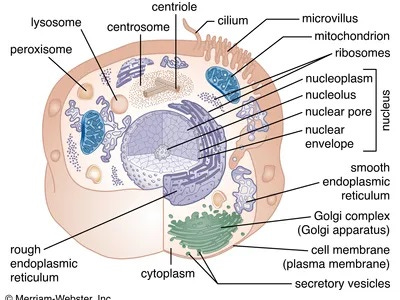
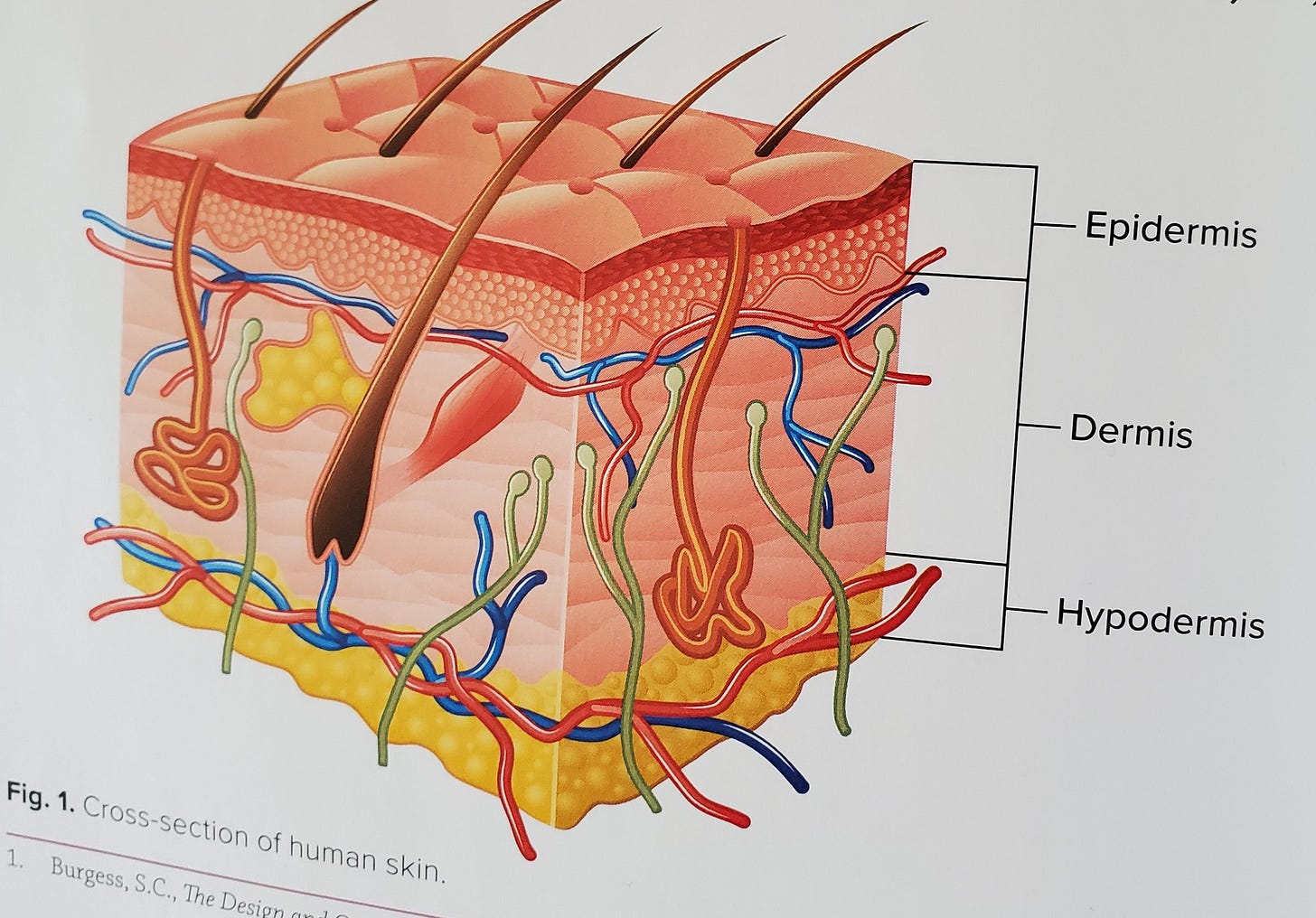
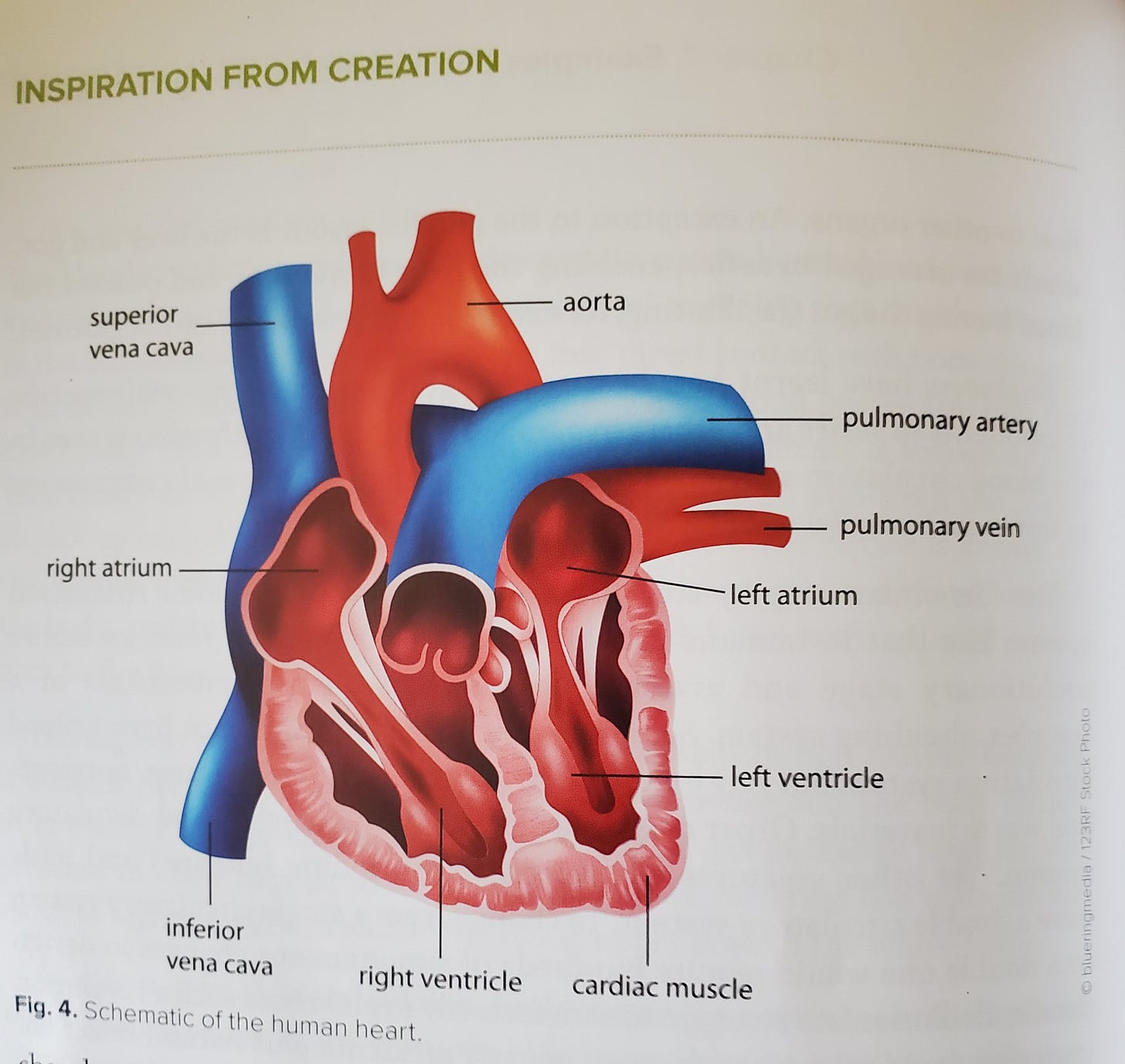
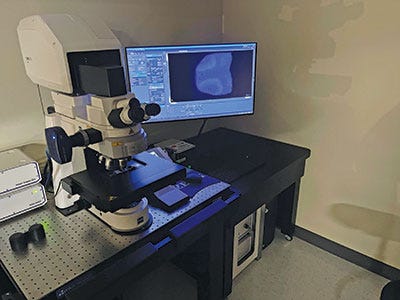
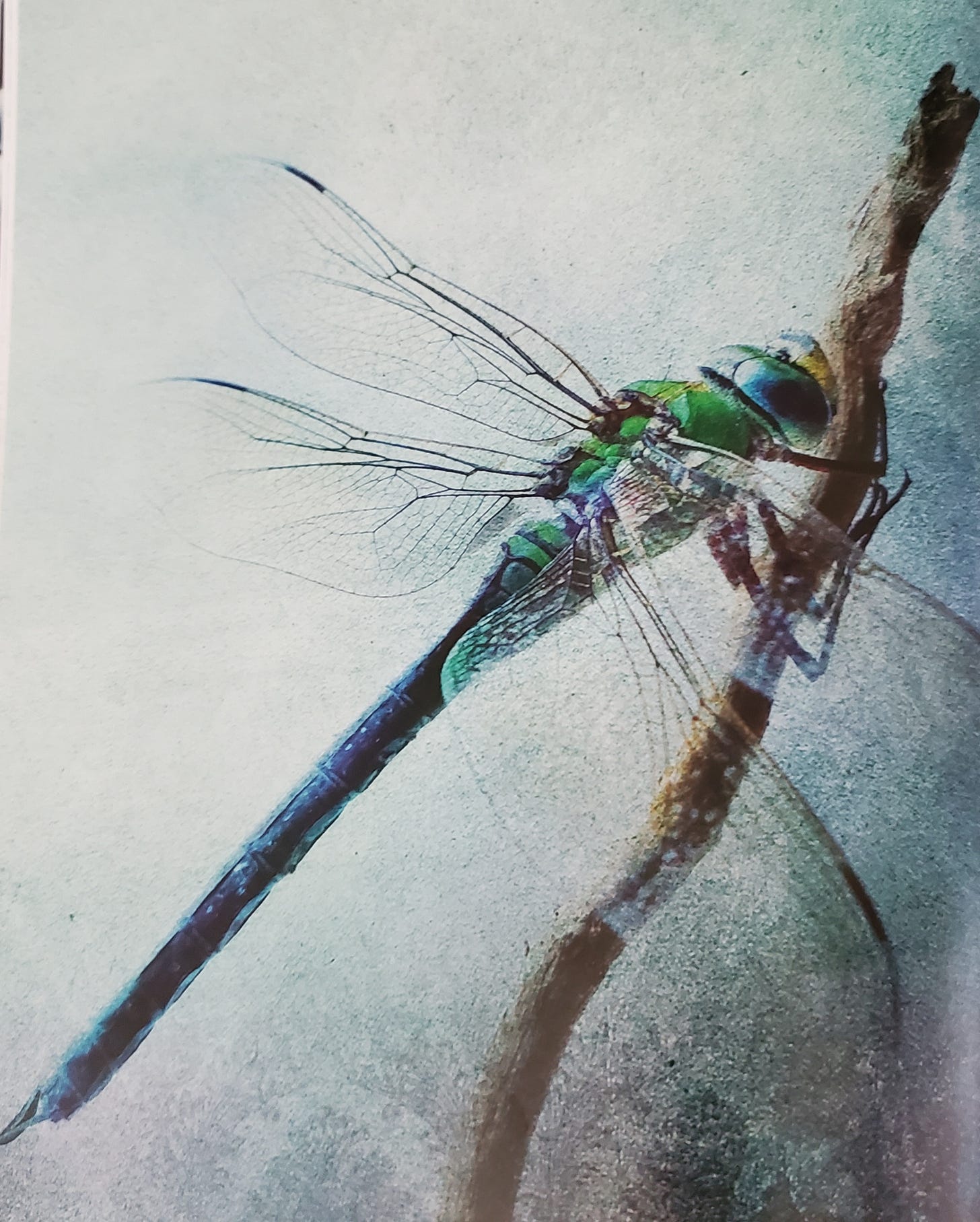

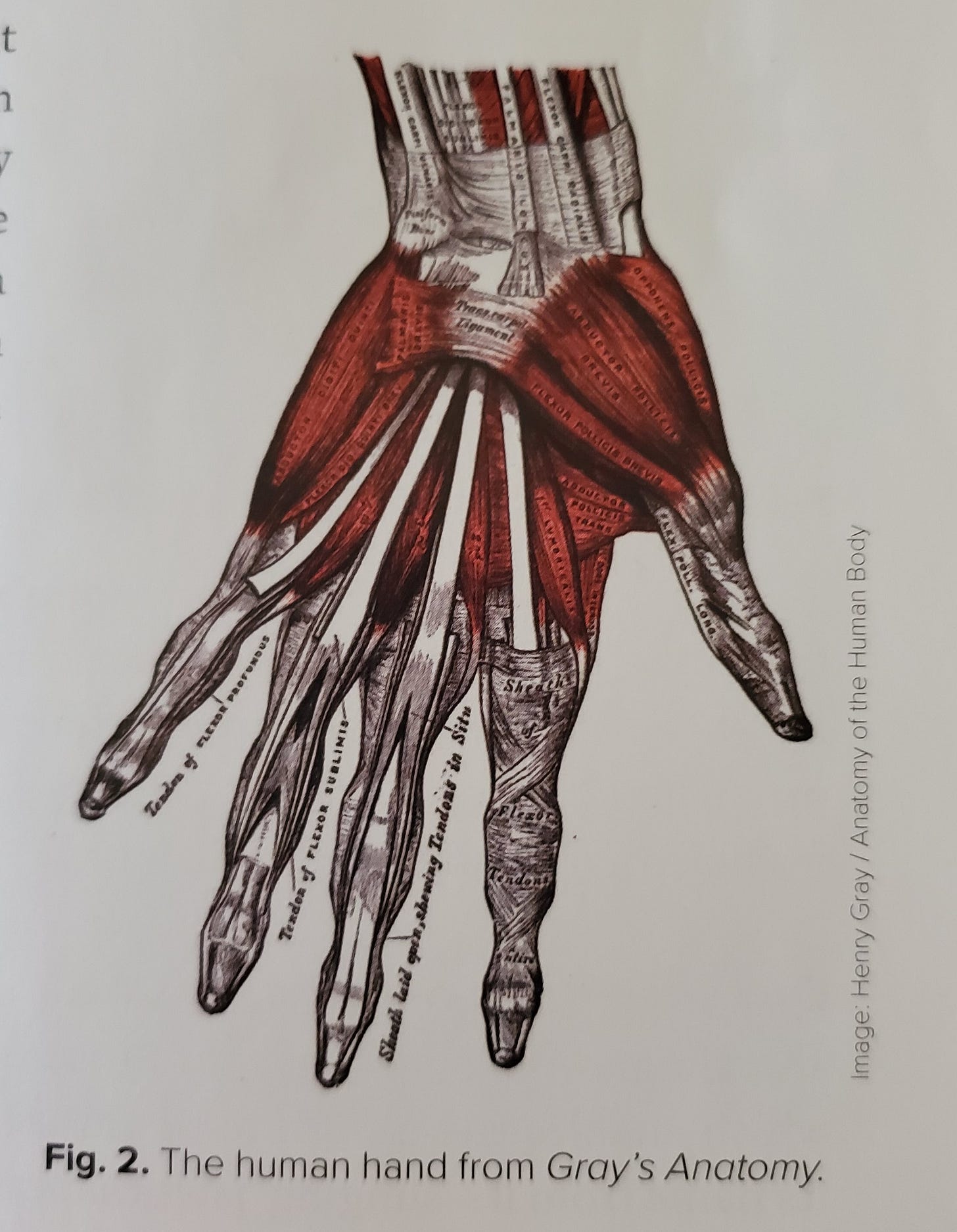
My son Isaac fell a few weeks ago (trying to impress a girl) and got a nasty deep gash on his knee. We briefly considered taking him to get stitches but then decided a little scar on his knee isn’t a big deal. Well - watching it heal was awe-inspiring. It took a long time for the gash to heal because it was fairly deep. It smartly started from the bottom and gradually sealed itself upward. Watching the healing process gave lots of opportunities to discuss the amazing self-repair-ability of the human body. Machines can’t heal themselves! And his immune system managed just fine to keep away infection. Glorious design!
great read